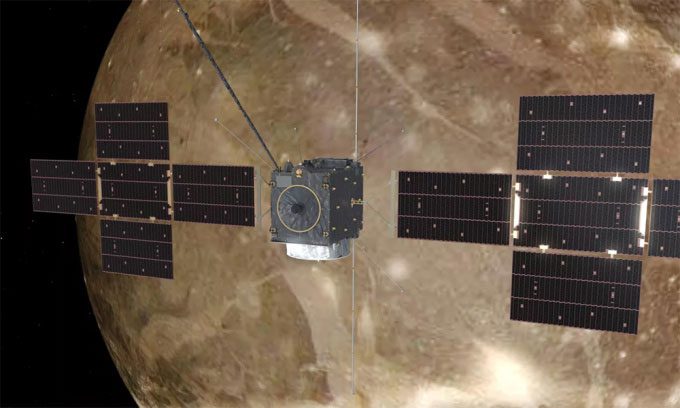The European Space Agency (ESA) announced on April 28th that a critical antenna on the Jupiter Icy Moons Explorer (JUICE) spacecraft has encountered a malfunction.

Illustration of ESA’s JUICE spacecraft orbiting Jupiter’s moon Ganymede. (Photo: ESA/ATG MediaLab).
According to ESA, the 16-meter radar antenna of the JUICE spacecraft has only opened one-third of its intended length. This device is designed to peer through the icy surfaces of Jupiter’s moons, searching for signs of conditions suitable for life in the subsurface waters. If fully operational, it would enable the spacecraft to look up to 9 meters beneath the surfaces of moons like Ganymede and Europa.
Engineers suspect that a small pin may be stuck, preventing the antenna from fully deploying. The flight control team in Germany plans to fire the JUICE’s engines in the hope of shaking the pin loose. If this approach is unsuccessful, they still have ample time to resolve the issue.
The Ariane 5 rocket launched JUICE from Kourou, French Guiana, at 19:14 on April 14th (Hanoi time). The spacecraft, roughly the size of a small bus, is expected to arrive at Jupiter in 2031. It is taking a longer route to its destination, including flybys of Earth, the Moon, and Venus to gain gravitational assistance (utilizing the gravity of celestial bodies to change direction and accelerate).
The JUICE mission, valued at approximately $1.8 billion, marks ESA’s first journey to the outer regions of the solar system, signifying an important milestone in Europe’s space exploration. The spacecraft will focus on studying Jupiter’s moons Ganymede, Europa, and Callisto.
ESA stated that all other systems on the spacecraft are functioning well. A radio antenna, solar panels, and a 10.6-meter magnetometer designed to measure Jupiter’s magnetic field have all been successfully deployed.





















































